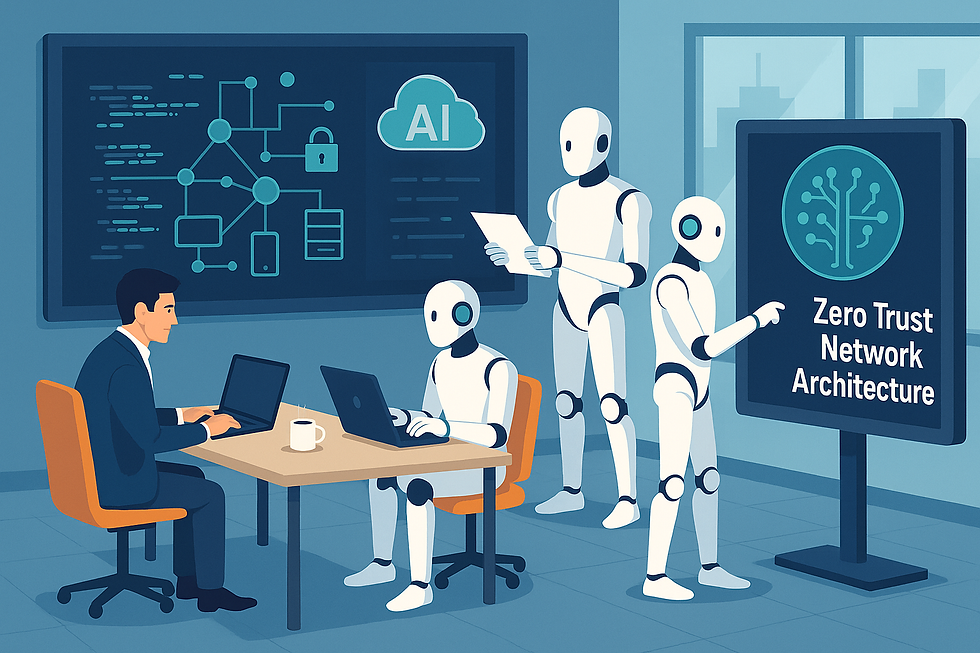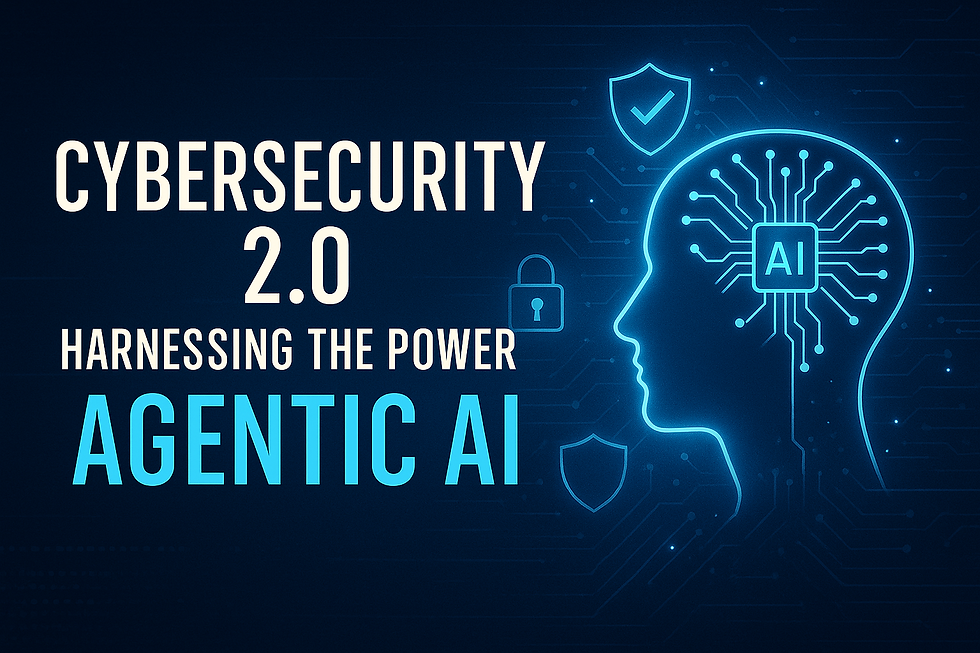The Double-Edged Algorithm: Safely Embracing AI in Zero Trust
- Logan Standard

- Aug 5
- 3 min read

The traditional security perimeter is no longer enough. With hybrid workforces, cloud-native environments, and increasingly intelligent threats, organizations are moving toward Zero Trust Network Architecture (ZTNA), a model that assumes no user or device should be trusted by default, even inside the network. At the same time, artificial intelligence (AI) is reshaping the cybersecurity landscape, offering powerful tools to enhance the real-time visibility, decision-making, and automation that Zero Trust requires. From government agencies to global tech giants, AI is rapidly becoming the engine behind modern Zero Trust strategies, transforming both how we defend and how we adapt to evolving threats.
AI’s greatest strength in a Zero Trust model lies in its ability to process vast amounts of security data at machine speed on a level that humans alone simply can’t match. AI-powered engines can analyze behavioral patterns to detect anomalies, such as a user accessing sensitive systems at unusual hours or a device making unexpected outbound connections. In response, the system can automatically enforce security policies: limiting access, triggering multi-factor authentication, or even isolating systems before damage occurs. Beyond detection, AI helps drive adaptive trust by constantly assessing risk and adjusting access levels dynamically. Companies are now leaning on AI to scale micro-segmentation, automate policy enforcement, and reduce response times from hours to seconds.
Many organizations are already seeing strong returns on their AI investments in Zero Trust initiatives. Google, for instance, deployed an internal AI agent called “Big Sleep” that recently identified and shut down a sophisticated cyberattack before it could spread without any human intervention. Microsoft is also innovating in this space by rolling out Entra Agent ID, a framework that extends Zero Trust principles to AI agents in environments like Copilot and Azure. These agents are given managed identities and access controls, just like human users, reducing the risk of automation being exploited. Even regulatory bodies are catching on. The Reserve Bank of India now mandates that financial institutions integrate AI-aware security practices alongside Zero Trust to defend against supply chain attacks and technology vendor lock-in.
While AI can be a powerful ally, it’s not without its own risks. One major concern is that attackers are now using AI too. Deepfakes, hyper-realistic phishing content, and automated social engineering campaigns at scale are just a few examples of ways AI is leveraged to trick human counterparts. On the defensive side, improperly trained AI models or rogue agents could misclassify threats, allow unauthorized access, or even interfere with critical systems. There's also the emerging threat of data poisoning, where attackers feed false information into learning models to manipulate their behavior. New startups like Noma Security are focusing entirely on these challenges, offering solutions to monitor AI agent behavior and ensure they operate within policy boundaries. It’s clear that integrating AI into Zero Trust must be done with caution and control.
AI should be viewed as a powerful co-pilot, but not an autopilot. The best implementations of Zero Trust with AI involve a careful balance of automation and human oversight. Security professionals still need to define access policies, review behavioral models, and regularly audit both the inputs and outputs of AI systems. A number of industry leaders stress that identity and access governance, especially for AI agents, must mirror the scrutiny applied to human users. This means provisioning digital identities, assigning minimal necessary privileges, and constantly monitoring for drift or abuse. Done right, AI enhances the security team’s capacity without replacing their critical judgment and contextual awareness.
Best Practices for AI-Driven Zero Trust
To fully harness the power of AI in a Zero Trust model, organizations should take a deliberate and structured approach:
Start with clear visibility: Map out user behaviors, device types, and application flows. AI models are only as good as the data they’re trained on.
Build AI-aware policies: Integrate real-time risk scoring, contextual authentication, and adaptive access controls into your Zero Trust framework.
Secure the agents: As AI agents become more prevalent, register them in identity systems, enforce least-privilege access, and monitor for rogue behavior.
Never go fully autonomous: Always keep humans in the review loop. Set clear escalation paths, track AI decisions, and treat AI systems as critical infrastructure components that require governance.




Comments